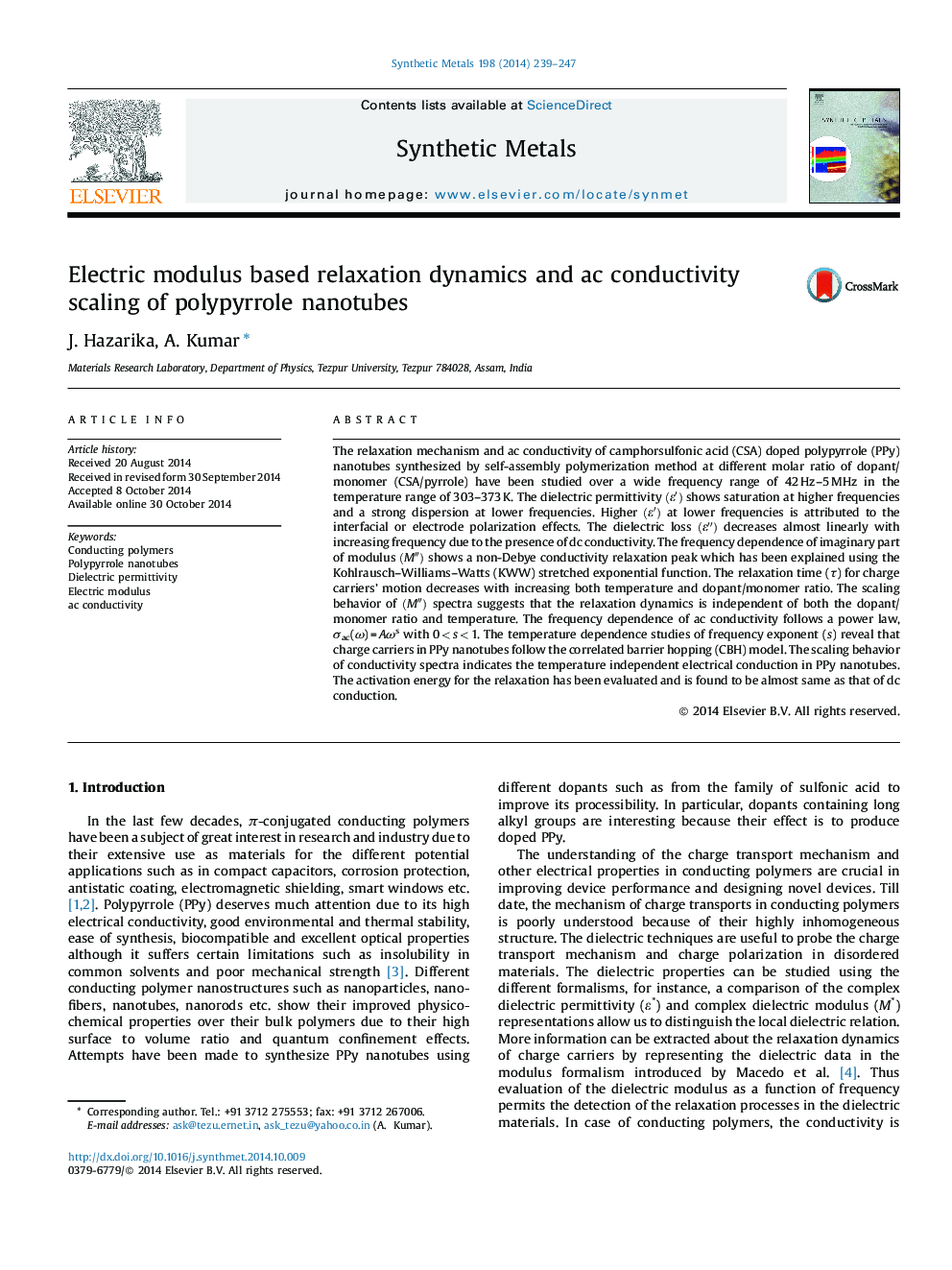| Article ID | Journal | Published Year | Pages | File Type |
|---|---|---|---|---|
| 1440741 | Synthetic Metals | 2014 | 9 Pages |
•Polypyrrole nanotubes have been synthesized by self-assembly polymerization method.•The dielectric permittivity increases with increasing dopant/monomer molar ratio.•At lower frequencies, higher dielectric loss is due to increase in dc conductivity.•The relaxation time decreases with increasing dopant/monomer molar ratio.•Scaling of ac conductivity suggests temperature independent relaxation dynamics.
The relaxation mechanism and ac conductivity of camphorsulfonic acid (CSA) doped polypyrrole (PPy) nanotubes synthesized by self-assembly polymerization method at different molar ratio of dopant/monomer (CSA/pyrrole) have been studied over a wide frequency range of 42 Hz–5 MHz in the temperature range of 303–373 K. The dielectric permittivity (ϵ′)(ϵ′) shows saturation at higher frequencies and a strong dispersion at lower frequencies. Higher (ϵ′)(ϵ′) at lower frequencies is attributed to the interfacial or electrode polarization effects. The dielectric loss (ϵ′′)(ϵ′′) decreases almost linearly with increasing frequency due to the presence of dc conductivity. The frequency dependence of imaginary part of modulus (M′′)(M′′) shows a non-Debye conductivity relaxation peak which has been explained using the Kohlrausch–Williams–Watts (KWW) stretched exponential function. The relaxation time (τ ) for charge carriers’ motion decreases with increasing both temperature and dopant/monomer ratio. The scaling behavior of (M′′)(M′′) spectra suggests that the relaxation dynamics is independent of both the dopant/monomer ratio and temperature. The frequency dependence of ac conductivity follows a power law, σac(ω) = Aωs with 0 < s < 1. The temperature dependence studies of frequency exponent (s) reveal that charge carriers in PPy nanotubes follow the correlated barrier hopping (CBH) model. The scaling behavior of conductivity spectra indicates the temperature independent electrical conduction in PPy nanotubes. The activation energy for the relaxation has been evaluated and is found to be almost same as that of dc conduction.
